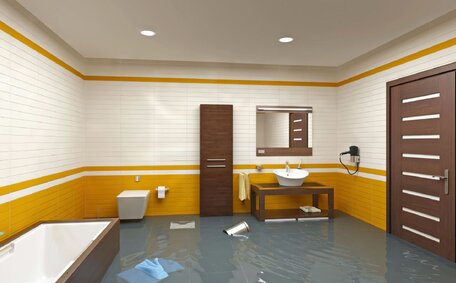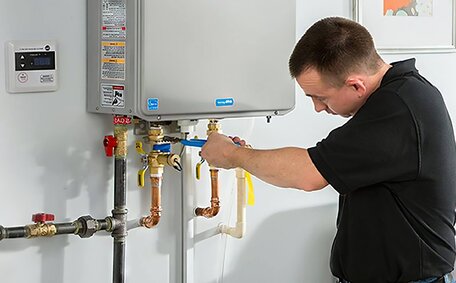
Signs Your Hot Water System Is Failing
Common signs your hot water system is failing include strange noises, rust, leaks, inconsistent temperature and pressure. Call our licensed plumbers if you notice these issues for repairs.
Read MoreSeveral household items frequently flushed down the toilet can cause clogs, such as:
Unveiling reasons why toilet is unexpectedly clogged often points to items adverse for its health, including wet wipes, cotton goods, and feminine products.
Upon flushing, these items accumulate within the pipes, leading to clogs, especially when combined with fats and oils.
This results in partially blocked pipes, indicated by gurgling sounds and slow drainage, or in severe cases, complete blockages and standing water. In severe scenarios, this may end up leading to a notable toilet clog, bringing about sewage backups at the toilet base and potential flooding. It may also overload and damage sections of pipe over time.
Recognising that improper flushing can cause clogs will help you understand your plumbing’s vulnerabilities and prevent many issues. Comprehending why your toilet isn’t clearing properly is crucial to ensure suitable flushing habits are followed by all, especially the young ones.
When you flush the toilet, waste begins its journey through the toilet trap, where excessive toilet paper can increase the risk of clogs. From there, waste and water enter the drain pipe system, passing through the soil stack pipe within your home’s structure.
The central soil stack, handling both kitchen and shower waste, is tied to the branch drain system that expels waste via the main drain vent on the roof. The vent ensures a steady air flow into the system, facilitating the smooth passage of waste by maintaining balanced air pressure.
Waste is carried by gravity from your toilet through the sewer lines to the main sewer line under your property. Eventually, waste converges with your house drain lines situated beneath the surface, directing the refuse to your septic tank or municipal sewer system.
Blockages in your home’s drainage system can occur if central plumbing segments, like the main sewer line, are damaged or if the roof’s drainage vent pipe is clogged with debris.
Problems like these can restrict waste flow, slowing down your home’s drainage or stopping it entirely. Contact your local plumber to resolve clogged toilets, preventing backups and significant damage.
There are several key steps you can adopt to prevent your toilet from clogging and ensure they maintain peak performance:
A leading cause of toilet clogs is the persistent flushing of items unsuitable for the plumbing system, resulting in recurring blockages. Ensure all household members understand the importance of only flushing human waste, toilet paper, and limited amounts of water down your toilets. Do not flush:
Remember, too much toilet paper can burden especially older low-flow models. Adhering to 4-5 sheets per flush is a wise practice to avoid clog toilet mishaps.
Facilitate proper disposal by placing a lidded bin near the toilet for non-flushables. Regular bin emptying will discourage the temptation to flush inappropriate items. Ensuring the job is done right, It is critical to teach young people about proper bathroom etiquette.
Flushing sanitary products like tampons and pads can seriously obstruct your drain system and cause backups. Use the bin provided instead.
If your toilet keeps clogging and doesn’t fully clear the toilet bowl in a single flush, this can eventually fall into blockages meant to be flushed at the trap or further down the line. Test this by placing a few sheets of toilet paper in the bowl alone. Should the toilet paper linger without clearing promptly when flush, it’s a sure sign the flushing pressure isn’t sufficient.
Common causes of clogged toilets include hard water build-up:
It’s time to call a plumber immediately if you detect a weak flush, as a toilet clogged with paper and other debris can worsen quickly.
It’s critical to have a robust toilet auger or plunger ready so you can unclog your toilet during minor blockage episodes. Consistently clear minor blockages with a plunger to avoid recurrent clogs. You can also avoid using chemicals when dealing with a clogged toilet before plunging, and only consider them if plunging fails.
Position the plunger over the toilet drain to form a seal, then plunge vigorously 10-15 times without lifting it out of the water.
If you’re undergoing bathroom or plumbing renovations, consider replacing old galvanised iron drain lines with PVC to lower the risk of root intrusion or corrosion.
Invasive plant roots can penetrate drain channels in search of water, frequently causing blockages. Listen for gurgling sounds as these signs often prelude the kind of items, including these things, that indicate potential root blockages. Have drains inspected and undergo drain cleaning as needed to nip issues in the bud.
Common signs your hot water system is failing include strange noises, rust, leaks, inconsistent temperature and pressure. Call our licensed plumbers if you notice these issues for repairs.
Read MorePipe relining is an eco-friendly alternative to pipe replacement that uses materials like epoxy resin to repair pipes without digging. It produces less waste and emissions than traditional methods. Learn about the environmental benefits of trenchless pipe relining.
Read MoreReplacing an outdated electric, gas or solar hot water system with a more efficient heat pump or solar model can significantly reduce your energy bills and carbon footprint. Take advantage of available rebates. Contact us to retrofit your old system today.
Read MoreMarrickville, 2204 NSW
We will call back as soon as possible.




